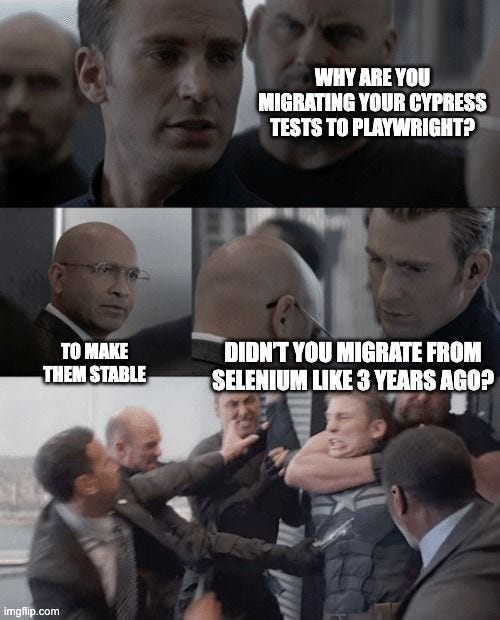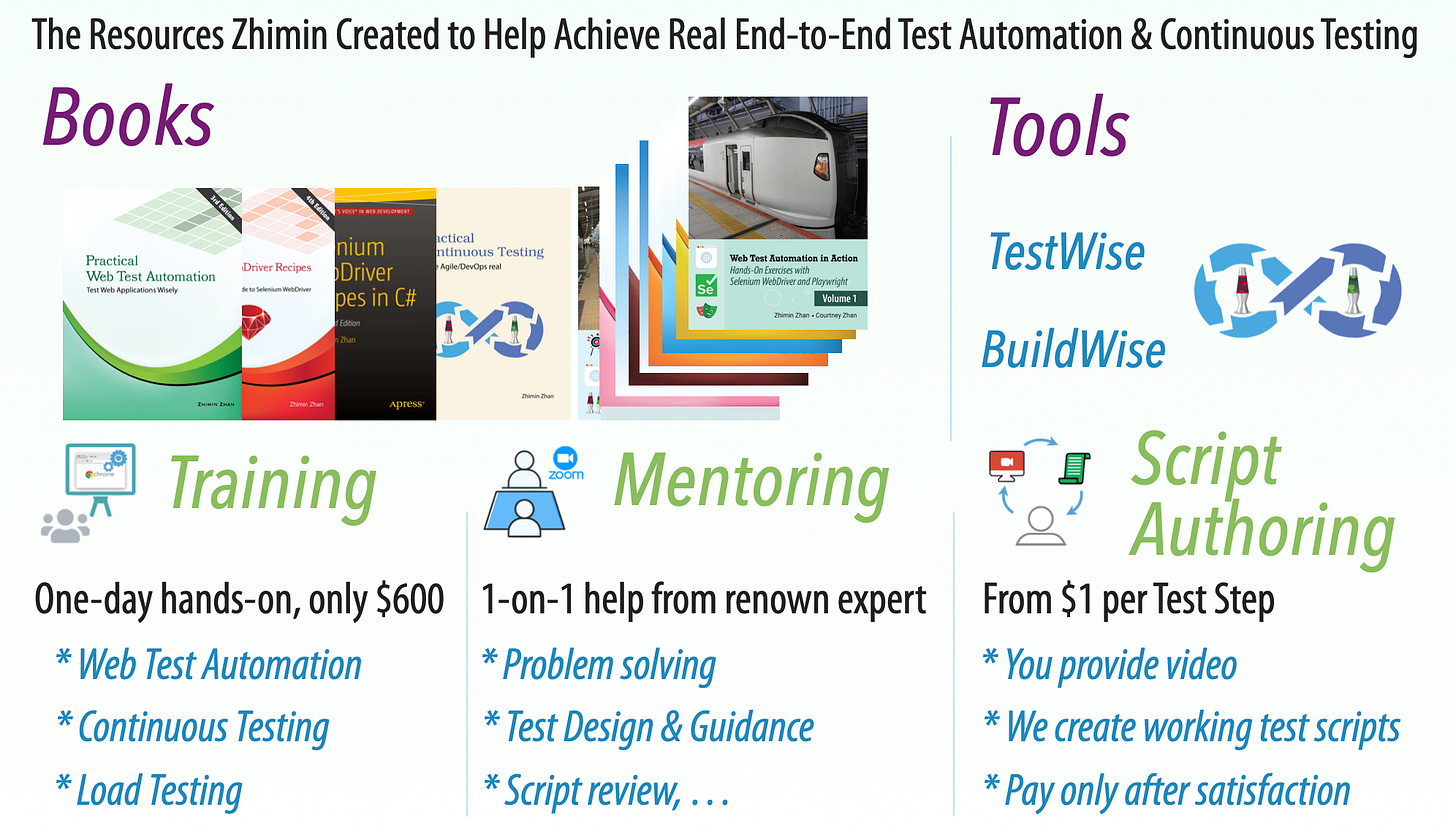A Suggestion To Run Playwright Tests in a Continuous Testing Server
End-to-end test Automation fails if the team does not run the entire test suite frequently. A Continuous Testing Server is essential for serious teams.
As I predicted last year, Playwright’s Download Count now Exceeded Cypress. In my article “Exit Strategy for Cypress Testers” (some might thank me if they had followed my advice years ago), I suggested teams upgrade to Selenium WebDriver or Playwright. Of course, the best option is W3C standard-compliant Selenium WebDriver + RSpec.

However, I understand that for many who are experiencing difficulties with Cypress test automation, migrating to Playwright is much easier to get management’s approval. (Human factors)
There are plenty of articles and video tutorials explaining how Playwright is better than Cypress, focusing on syntax, reliability and features. However, I have noticed that nearly all of them do not address an important aspect: running a suite of Playwright tests on a continuous testing server. Unless you only have a handful of Playwright tests, you do need to run them on a good continuous testing server, frequently. Why? Maintenance.
For those familiar with Cypress, cypress.io (the commercial company behind Cypress) offers Cypress Cloud, a commercial offering designed to execute Cypress tests.

To me, Cypress is a thing of the past. I don’t want to waste time commenting it's Cypress Cloud. If you do want my opinion, it is quite bad. The fact: very few paid users, many so-called Cypress Ambassadors don’t even sign up for it. Check out my articles:
“It Seems Most ‘Cypress Ambassadors’ Don’t Love Cypress as They Claimed”.
The “#1 Cypress Ambassador” Is Now Open to Finding Playwright Jobs
As I predicted, cypress.io announced (2023–09): force Cypress users to use its commerical Cypress Cloud services.
“Starting with version 13 of the Cypress app, Cypress will begin enforcing data recording restrictions that block certain third-party products and services in order to protect our intellectual property”.
AI’s verdict on Cypress testing tool.
While Cypress has its flaws, it at least offers a continuous execution option (not a good one) with Cypress Cloud, despite concerns about its quality and high cost. But what options are available for Playwright testers?
Some migrating from Cypress to Playwright might consider using GitHub Actions, Jenkins, or TeamCity. However, this is a wrong path, as these are CI servers designed for executing unit and integration tests. Running automated end-to-end (UI) tests, known as Continuous Testing, is an entirely different game: far more challenging.
I recommend using BuildWise, a free, open-source, and internationally award-winning continuous testing server. Disclaimer: I am the creator of BuildWise. To give you an idea of what you can achieve, take a look at this showcase: 500+ End-to-End (via UI) Test Suite: E2E Test Automation is Surely Feasible for Large/Complex Apps.
For how? Check out my daughter’s article, “Set up Running Playwright Test in BuildWise CT Server”.
Setting it up for a sequential run will likely take you about only 10–30 minutes. Once your Playwright suite grows to a certain size, then set up parallel execution (using BuildWise agents) to reduce the overall suite execution time and improve reliability.
By the way, that’s how Courtney crushed a ‘senior test automation engineer’ (who advocated Playwright) as an intern, three years ago. For details, check out this article.
Related reading:
My eBooks:
- Practical Web Test Automation with Selenium WebDriver
- Practical Continuous Testing: make Agile/DevOps real
- Web Test Automation in Action: Volume 1, Hands-On Exercises with Selenium WebDriver and Playwright (coauthored with Courtney Zhan)Set up and Develop Playwright Test Scripts with TestWise IDE
Recommend a Great CI/DevOps Presentation: “Continuous Integration at Facebook”
Why Raw Selenium Syntax is Better than Cypress and Playwright?









